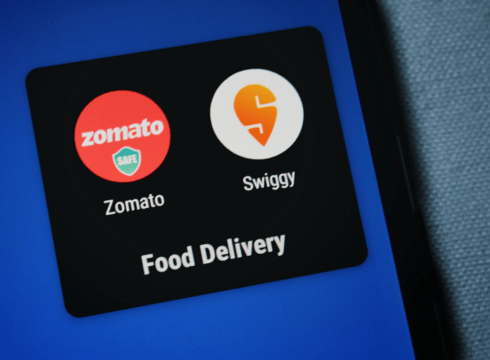Restaurants receive around 20 online orders per day on average through Zomato and Swiggy combined, contributing around 30% to their revenue
While the organised food services industry can survive without the presence of aggregators, practically that is unlikely to ever happen: JM Financial
JM Financial also revealed that over 85% of the restaurants also priced their online menu higher than their dine-in menu
Inc42 Daily Brief
Stay Ahead With Daily News & Analysis on India’s Tech & Startup Economy
In its recent report, brokerage firm JM Financial has termed food aggregators Zomato and Swiggy indispensable to the restaurant industry. It further said that restaurants in India can attribute a third of their revenue to food delivery aggregators Zomato and Swiggy.
“With no meaningful competition in sight, we believe both incumbent aggregators are becoming indispensable to the ecosystem,” the report said.
The report, covering 135 restaurants across India’s top 10 cities, noted that 75% of the participating restaurants also had other channels for receiving delivery orders, including apps, websites, social media and direct telecalling. Even so, orders from Swiggy and Zomato contributed the most to their overall revenues.
The brokerage firm’s report noted that the restaurants it talked to received around 20 online orders per day on average through both Zomato and Swiggy combined, amounting to around 30% of their revenue.
“This is despite the fact these restaurants have been active on the aggregator platforms for only ~3.5 years (average),” added JM Financial.
JM Financial also noted that the aggregators have the balance of power in their favour in the industry, as restaurants become more reliant on Zomato and Swiggy for online orders.
“While, theoretically, the organised food services industry can survive without the presence of aggregators, practically that is unlikely to ever happen. Even some of the branded, chain restaurants mentioned that they have limited bargaining power over aggregators on account of the latter’s sheer size, customer loyalty and diversified supplier base,” said the report.
The report also noted the high commissions as being the primary area of friction between restaurants and aggregators.
“The average commissions claimed by the restaurants stood at 27% of AOV (for the restaurant). We note that this number is likely inflated by the 18% GST that aggregators are required to collect from restaurants on top of their own commissions. Adjusted for that, actual commissions could be 22-23%,” said the report.
However, JM Financial also revealed that over 85% of the restaurants also priced their online menu higher than their dine-in menu, passing on the cost of the high commissions and discounts offered by food delivery aggregators to the customers.
On their part, both Zomato Swiggy said they’ve been working to boost demand at restaurants working with them. Swiggy said its food marketplace has helped boost sales for nearly 3 Lakh restaurants.
Zomato, in its Q4 earnings call, said a lot of its restaurant partners get a large number of orders directly placed with them either through phone or via other online channels. Akshant Goyal, Zomato’s CFO, told analysts last month that the listed food delivery unicorn would welcome any changes that help the restaurant industry grow.
“At this point, we don’t feel anything is going to come at the cost of our growth as the overall penetration is low. And therefore, there is room for everyone to grow in this market right now,” Goyal added.
Be that as it may, the restaurant industry association National Restaurant Association of India (NRAI) said these aggregators are not indispensable. While aggregators have helped demand, there has been a friction point over the past several years over the high commission rates that restaurants claimed ate into their profit margins.
JM Financial maintained a ‘Buy’ rating on Zomato at a target per-share price of INR 105. Incidentally, the listed foodtech’s stock price has rallied in recent weeks. At market close on Tuesday (June 20), Zomato’s share price hovered at INR 76.05 apiece, rallying over 20% in the past month.
Last month, JM Financial had given another confidence boost to the two food delivery incumbents, stating that the government’s Open Network For Digital Commerce (ONDC) was not a threat to them in the near term.
A research note from Kotak Institutional Equities also said that Zomato and Swiggy introducing differential pricing models for their subscription packages will help the companies improve monetisation.
“In our view, the differential pricing of packages will aid higher CM on these orders, as customers with higher ordering frequencies will be charged a higher package price,” the analysts at the brokerage firm had said.
{{#name}}{{name}}{{/name}}{{^name}}-{{/name}}
{{#description}}{{description}}...{{/description}}{{^description}}-{{/description}}
Note: We at Inc42 take our ethics very seriously. More information about it can be found here.


